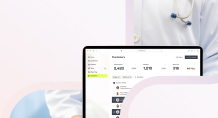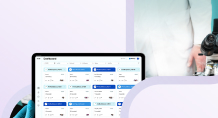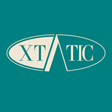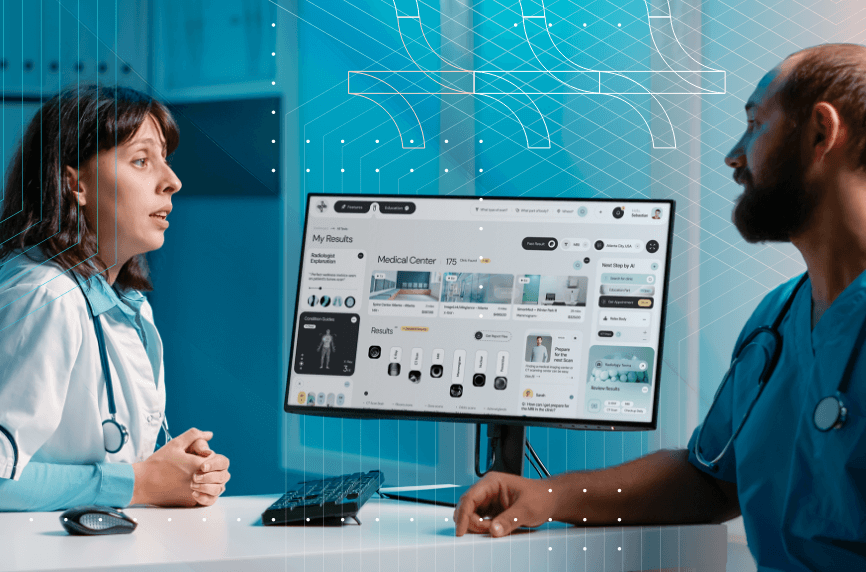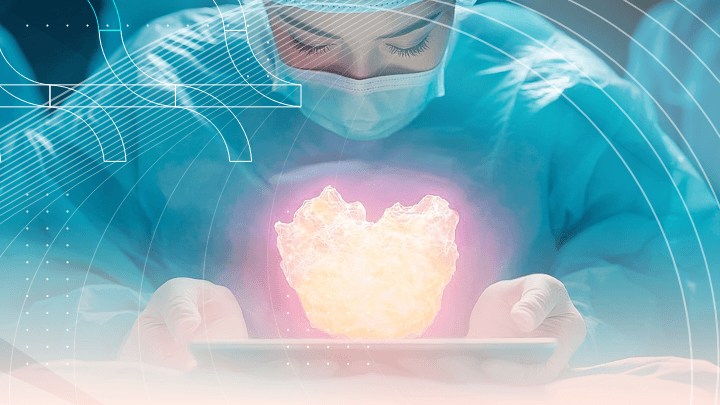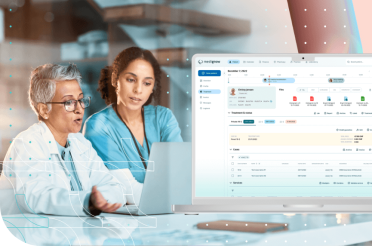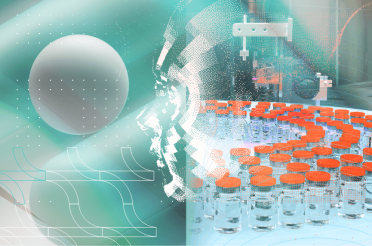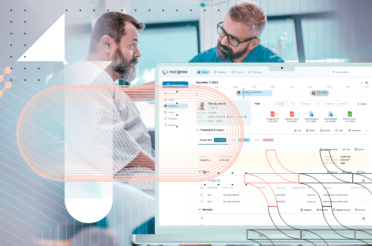In the new age of medicine, everything is transforming. Medical conditions and diseases are changing and so are the diagnostic tools. One of the most groundbreaking advancements is Software as a Medical Device (SaMD).
This is standalone software and its best feature is that it is not being tied to physical hardware. In this article, we explore the innovative potential of this new technology.
Introduction to SaMD
Software as a Medical Device (SaMD) refers to software designed for medical purposes and operates independently of any physical hardware. Its functions include diagnosis, treatment, and monitoring.
SaMD refers to applications that can run on general-purpose computing platforms like smartphones, tablets, or PCs. Unlike software embedded in or necessary for traditional medical devices, SaMD software functions autonomously to achieve its medical intent.
SaMD may work in combination with other medical devices or software, serving as a module, or as an integral part of broader healthcare systems. Mobile apps that meet these criteria also qualify as SaMD. Examples include tools that analyze medical images, provide diagnostic support, or assist in treatment planning.
SaMD’s flexibility and standalone functionality make it a critical innovation in modern healthcare. [1]
SaMD Definition and characteristics
The term Software as a Medical Device is described by the International Medical Device Regulators Forum (IMDRF). Software is considered a medical device when it is intended for one or more medical purposes and performs them independently (i.e., without being part of a physical medical device).
SaMD software could work with medical images, signals from in vitro diagnostic devices, or patterns/signals from imaging or signal acquisition systems. As a result, they provide recommendations regarding the diagnosis and treatment of diseases or conditions.
Software meeting these criteria often falls under Clinical Decision Support Software (CDS) which is aimed at health care providers. On the contrary, it could be Patient Decision Support Software (PDS), designed for patients or caregivers. These tools may offer functionalities such as predictive or prognostic information. Depending on their intended use, some CDS and PDS products are regulated as medical devices.
SaMD can run on general-purpose platforms like smartphones, tablets, or PCs and may integrate with hardware medical devices or other medical software. It can also operate as a standalone application or in conjunction with other operating systems. [1]
Regulatory framework for SaMD
SaMDs have the potential to make a difference but like every other device, they need to be regulated by certain laws. Regulators must evaluate its software-specific risks, performance, and compliance with medical standards.
The key regulatory bodies differ based on the region. In the United States, the Food and Drug Administration (FDA) decides the role of SaMD in the country. FDA classifies it as a medical device, uses a risk-based approach to regulate it, and different regulatory pathways.
For example, SaMD that is submitted under the 510(k) pathway must perform similarly to an already existing device in safety and effectiveness. This pathway is most common for moderate-risk devices, such as apps that monitor chronic conditions or support clinicians in diagnosis.
On the other hand, the De Novo classification is used for new devices that have no existing device as a comparable predicate. It is frequently used for AI-powered diagnostic tools in imaging diagnostics or other medical fields.
The premarket approval (PMA) is a regulatory pathway for high-risk devices. It is used for SaMD involved in critical decision-making, for example, tools for detecting life-threatening conditions.
In the European Union, SaMD is regulated on the basis of the Medical Device Regulation (MDR). SaMD is classified based on risk. The higher-risk categories require solid clinical evidence, performance evaluation, and conformity assessment by a notified body. Only after that, it can receive a CE marking for market access.
SaMD software developers must always adhere to international standards like ISO 13485 for quality management systems. Another important standard is the IEC 62304 for software lifecycle processes. Additionally, cybersecurity and data privacy are crucial areas of compliance. [2]
SaMD development and validation
There are a few steps to follow when developing and validating the SaMD life cycle:
- Software requirements analysis: This first phase is focused on defining the software’s purpose and its regulatory requirements. This is also the step to establish the target users and the operating environment. The output of this is the Software Requirements Specification (SRS) document that serves as a foundation for design and validation.
- Software architectural design: Next, is the step of software architecture when the basic components of the system and their interactions are decided. In this step, the appropriate platforms for operability are selected. They could be cloud-based, mobile, etc.
- Software unit implementation and verification: At this stage, individual software units or components are developed and tested. The purpose of this step is to verify functionality and test for regulatory compliance. At the end of this step, you receive verified software units ready for integration.
- Software integration and integration testing: After that comes the time to combine the different modules into one software system. Then, integration testing is conducted and the communication with other systems is tested.
- Software system testing: This is the final testing phase in which the fully integrated system is validated. In this step comes confirmation of the software that it meets its medical functions and complies with regulations.
After meeting these requirements, the software is ready for release. However, the tests and verifications are not finished. It comes the time for post-market validation and continuous monitoring. Also, there is a need to ensure compliance with regulatory requirements with every update of the laws. [3]
Risks and benefits of SaMD
Software as a Medical Device integrates advanced technologies and medical evidence to streamline the clinical management of various health conditions. One of its key benefits is improved health outcomes. SaMD enhances healthcare by simplifying the collection and analysis of patient data. This leads to better medical decision-making and outcomes.
By continuously monitoring health conditions, SaMD provides doctors with actionable insights for diagnoses and treatments. For example, sleep monitoring tools powered by SaMD can analyze physiological signals, detect disorders like sleep apnea, and recommend treatment plans based on real-time data.
Moreover, SaMD has faster data input to drive innovation. It has the ability to integrate seamlessly into existing healthcare ecosystems and accelerates the pace of innovation. Unlike a hardware medical device, a software-based medical device can be updated quickly and cost-effectively. These processes often utilize the Internet of Medical Things (IoMT) and cloud platforms to collect and share health data. It also gathers valuable feedback from users which further informs software improvements and innovation.
Last but not least, SaMD enables remote diagnosis and prevention – the biggest benefit in the 21st century. SaMD enables real-time tracking of health conditions which allows for early symptom detection and proactive care. Also, it supports monitoring chronic diseases like diabetes or asthma. For instance, SaMD can analyze digital mammogram images to detect potential signs of breast cancer. [4]
On the other hand, new technology always has challenges and risks. For example, SaMD systems have the difficult task of maintaining regulatory compliance. This includes robust risk management as well as data privacy and cybersecurity.
Another one of the risks of SaMD is connected to the first – these systems must maintain patient safety. This means that cybersecurity is a must. Moreover, SaMD should have a human-centered design that needs to have post-market surveillance.
There is always the risk of non-interoperability. SaMD needs to adhere to interoperability standards and maintain optimal connection and work among the devices and software.
Development and support of medical device software is not an easy task. Many things must be considered before and during the work of these systems and all of their risks and benefits are important. [5]
SaMD classification and risk levels
Regulating Software as a Medical Device (SaMD) proposed frameworks that classify devices based on risk to ensure safety and effectiveness.
The FDA follows a risk categorization, dividing SaMDs into three classes:
- Class I: Low-risk SaMD (e.g., otoscope apps) requires general controls but no premarket review.
- Class II: Moderate-risk SaMD (e.g., apps monitoring physiological processes) needs general/special controls and 510(k) premarket clearance.
- Class III: High-risk SaMD (e.g., artificial pancreas apps) requires premarket approval and clinical evidence of safe and effective software.
In the EU, SaMD falls under the Medical Device Regulation (MDR) and is also classified by risk. Notified Bodies assess conformity for higher-risk classes, while medical device manufacturers self-certify low-risk devices:
- Class I: Low risk (e.g., fertility trackers).
- Class IIa/IIb: Medium risk (e.g., apps analyzing vital data).
- Class III: High risk (e.g., closed-loop systems).
According to Health Canada SaMD falls under medical device regulations, with classification based on risk and intended use.
All of these regions emphasize aligning SaMD regulations with advancing technologies like AI and clinical decision support tools, ensuring patient safety and innovation. [6]
Clinical evaluation of SaMD
Clinical evaluation is an important step in releasing one SaMD.
It contains three stages:
- The first stage is the declaration of valid clinical association. In this step, SaMD manufacturers are looking for a correlation between the SaMD’s input and the targeted clinical condition.
- The second stage explores the analytical and technical performance of the system. The generated data from SaMD must be accurate, reliable, and precise.
- The last third step is called Clinical performance. In this stage, the developers measure if the output data achieves the software’s intended medical purpose in the target population. [2]
Overall, the clinical evaluation of SaMD ensures that the software intended for medical use meets the same safety and effectiveness standards as a traditional medical device. This rigorous process is essential for delivering reliable and accurate healthcare solutions to patients.
SaMD implementation and use cases
There are many fields of performance of Software as a Medical Device. In this article, we will note some of them.
There is a specific SaMD as sleep diagnostic software. It is a cloud-based platform for respiratory and sleep management. It assesses variables from heart rate monitors, oxygen saturation devices, or EEG sensors. It identifies sleep stages and anomalies in them. This SaMD is beneficial for detecting sleep apnea, insomnia, and others.
Another useful gadget is the computer-aided diagnosis (CAD) software to detect breast cancer. This is a SaMD for the assistance of healthcare professionals in localizing and diagnosing breast cancer. It analyzes medical imaging (e.g., mammograms) and identifies abnormalities. It is extremely tactical because it is integrated with Picture Archiving and Communication Systems (PACS) – the universal program used by healthcare providers for medical imaging. Breast cancer CAD can detect carcinoma early and reduce human error.
Remote Patient Monitoring (RPM) SaMD is another transformative technology. This software collects data in great quantities. This is possible because of an integration between the system and medical devices and wearables, for example, blood pressure monitors, glucose meters, and ECG devices. The RPM SaMD has a user-friendly interface that generates alerts for healthcare providers or patients in critical health conditions. Also, it interfaces with electronic health records (EHRs) to provide seamless data access for clinicians.
Not only somatic diseases and conditions can be monitored and diagnosed through SaMD. For example, there is another SaMD software for cognitive behavioral therapy (CBT). It is a used approach for managing mental health conditions such as anxiety, depression, PTSD, and insomnia. These software programs use therapy sessions through which they enhance a patient’s mental health.
All of these and many more SaMDs help to innovate the healthcare environment in the world. [4]
Discover how we can help outsource Healthcare projects efficiently Speak to an expert today, and see how our on-demand IT talent and augmented teams can efficiently deliver value at every step of your roadmap.

SaMD post-market surveillance
Post-market surveillance is a critical aspect of the safety measurement of software as a medical device. It is constructed on continuous monitoring of the software, its updates, and the evolving risks.
A key component of post-market surveillance is incident reporting. This is the aspect of collecting and analyzing reports of adverse events and malfunctions. Another important part is the user feedback, including complaints. Feedback loops help in refining the software and addressing minor issues before they escalate.
Software updates and patches should also be monitored. They must be rigorously tested to ensure they don’t introduce new risks or reduce effectiveness.
Post-market surveillance for SaMD is a dynamic process. It ensures that these software solutions remain safe and effective throughout their lifecycle. [3]
Global harmonization of SaMD regulations
Global policies must prioritize safety and risk management in healthcare through collaboration among key regulatory bodies such as the IMDRF, EU, and others. These efforts aim to address fragmented regulations and establish consistent safety and quality standards across nations.
Currently, varying rules and testing methods create challenges for digital health services. Achieving global consistency will help streamline processes, improve innovation, and expand access to healthcare worldwide.
For example, the IMDRF introduced a globally accepted definition of SaMD that emphasizes transparency and evidence-based evaluation. Adoption of international standards like ISO 13485 (Quality Management Systems) and IEC 62304 (Software Lifecycle Processes) as well as other guidance documents supports development and validation.
The FDA adopts IMDRF initiatives for a regulatory approach. Programs like the Medical Device Single Audit Program (MDSAP) simplify compliance to satisfy all of the SaMD requirements. The European Union’s Medical Device Regulation (MDR) also aligns with IMDRF principles.
While challenges remain, the ongoing collaboration between regulators and stakeholders continues to advance the global harmonization of requirements. [7]
Future trends in SaMD
Technology advancements are expected in every field of medicine, even in this new software trend. For example, it is expected to include more proficiency in Artificial Intelligence and Machine Learning (AI/ML). AI/ML-powered SaMD will enhance diagnostics and therapy plans. Learning algorithms will allow SaMD to adapt and improve performance based on new data.
SaMD will support more reliable remote patient monitoring by integrating with wearables. Also, SaMD will expand its focus on personalized medicine. This means that patient-specific data will be used for evidence-based medicine.
Cognitive behavioral therapy applications, for instance, are expected to gain widespread adoption. This could benefit all of the psychiatric patients worldwide. Also, the wider adoption of SaMD would expand access to healthcare in underserved regions.
In conclusion, SaMD technology is intended to revolutionize the way we do modern medicine. From difficult diagnoses to therapy sessions – they have something for multiple healthcare situations!
Sources
[2]https://www.makrocare.com/Whitepaper/regulatory-framework-software-med-device.pdf
[3]https://www.greenlight.guru/blog/samd-software-as-a-medical-device
[4]https://kms-healthcare.com/blog/software-as-a-medical-device/
[5]https://htdhealth.com/insights/top-5-challenges-for-founders-developing-samd/
[6]https://ispe.org/pharmaceutical-engineering/july-august-2021/software-medical-device-fundamentals


